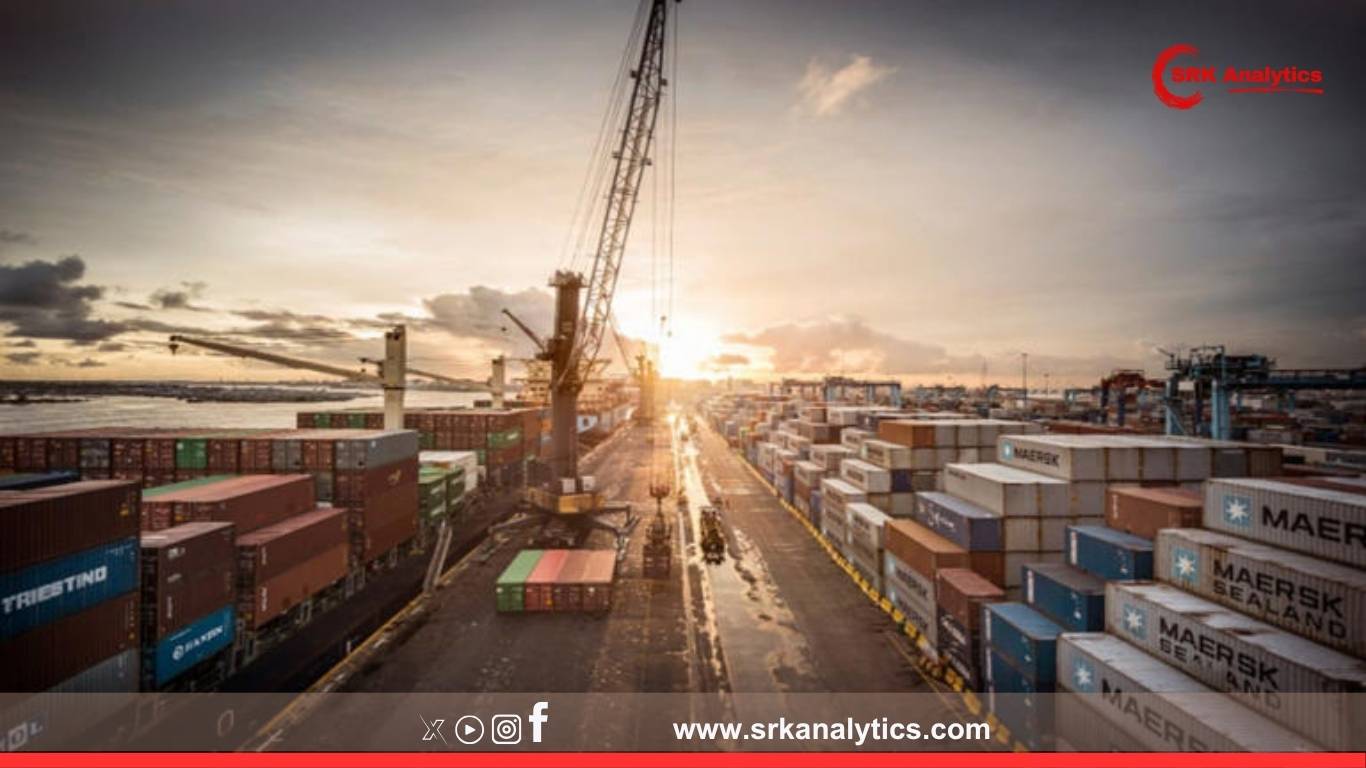Gujarat Pipavav Port Ltd (APM Terminals Pipavav), one of India’s leading gateway ports on the west coast, reported its Q1FY25 business update on Tuesday, revealing stable container volumes while registering a strong growth in Ro-Ro (roll-on/roll-off) cargo traffic. The results reflect resilience in operational performance despite global shipping headwinds and uneven demand patterns across trade segments.
Key Highlights Of Q1FY25 Performance
| Cargo Segment | Q1FY24 | Q1FY25 | YoY Change |
|---|---|---|---|
| Container Volume (TEUs) | 209,000 | 208,000 | -0.5% |
| Dry Bulk Cargo (MT) | 1.15 million | 1.14 million | -0.8% |
| Liquid Cargo (MT) | 0.25 million | 0.24 million | -4% |
| Ro-Ro Units | 43,000 | 47,800 | +11% |
According to the port’s operational data, container throughput remained largely flat at ~208,000 TEUs, marginally lower than the previous year’s comparable quarter. However, Ro-Ro traffic, primarily driven by automobile exports and coastal vehicle movements, witnessed a robust 11% year-on-year growth.
Management Commentary
The company stated that its diversified cargo portfolio continues to support overall performance despite challenges in the container trade segment:
“While container volumes remain subdued due to global demand uncertainties and regional transshipment competition, we are encouraged by the double-digit growth in Ro-Ro traffic, reflecting continued strength in India’s automotive export sector.”
The port also noted stable performance in bulk cargo, with coal, fertilisers, and minerals continuing to form the bulk of dry cargo throughput.
Segment-Wise Performance Snapshot
| Segment | Key Commodities | Performance Drivers |
|---|---|---|
| Containers | Textiles, chemicals, machinery, agri-exports | Slower European demand, competition from Mundra and JNPT |
| Dry Bulk | Coal, fertilisers, minerals | Steady demand from hinterland industries |
| Liquid Bulk | Edible oils, chemicals | Seasonal moderation in edible oil imports |
| Ro-Ro | Automobiles (cars, tractors) | Surge in exports to Africa and South-East Asia; coastal distribution to southern states |
Gujarat Pipavav Port: Strategic Positioning
Gujarat Pipavav Port, operated by APM Terminals (part of Maersk Group), is strategically located near Bhavnagar on India’s west coast, serving Gujarat, Rajasthan, Haryana, Punjab, and NCR hinterlands. The port has a designed annual cargo handling capacity of:
- 1.35 million TEUs (container cargo)
- 4.2 million tonnes (dry bulk cargo)
- 2 million tonnes (liquid bulk cargo)
- 250,000 units (Ro-Ro cargo)
Industry Trends Impacting Pipavav’s Volumes
- Global Container Shipping Slowdown: Excess capacity, softening freight rates, and uneven trade flows impacted container growth across Indian ports.
- Strong Automotive Exports: India’s automobile exports surged in Q1, driving Ro-Ro cargo growth at ports with dedicated car terminals like Pipavav and Ennore.
- Coal Import Stability: Power and steel sector demand kept coal import volumes stable despite volatility in international coal prices.
- Regional Competition: Rising capacity and service offerings at Mundra and Hazira ports continue to intensify competition in the Gujarat port ecosystem.
Operational Efficiency & Sustainability Initiatives
The company highlighted continued investments in operational efficiency and green port initiatives. In Q1, the port advanced:
- Expansion of electrified yard equipment to reduce diesel consumption
- Solar rooftop projects to increase renewable energy use
- Rail connectivity improvements to enhance hinterland cargo evacuation
These measures align with APM Terminals’ global decarbonisation roadmap targeting net zero emissions by 2040.
Market Expert Opinions
| Expert | Organisation | Comment |
|---|---|---|
| Rajiv Agarwal | Shipping Analyst | “Flat container growth is in line with India’s western ports trend this quarter. Ro-Ro segment remains the bright spot with increasing automobile exports.” |
| Ritesh Mehta | Logistics Consultant | “Gujarat Pipavav’s diversified cargo profile ensures resilience. However, further gains in container volumes will depend on global demand revival and competitive pricing.” |
| Sunita Joshi | Maritime Economist | “Sustained growth in vehicle exports augurs well for ports with dedicated Ro-Ro facilities. Pipavav is well positioned to tap this segment.” |
Recent Developments At Gujarat Pipavav Port
| Month | Development | Impact |
|---|---|---|
| May 2024 | MoU signed with Indian Railways for rail connectivity upgrades | Faster evacuation; improved hinterland connectivity |
| March 2024 | Commissioned additional RTG cranes | Enhanced container yard handling efficiency |
| January 2024 | Solar power project expansion | Lower operational carbon footprint |
Competitive Landscape: Western India Ports Comparison
| Port | Container Volume (Q1FY25 est.) | Key Strength |
|---|---|---|
| Mundra Port (Adani) | ~1.5 million TEUs | Largest capacity; extensive hinterland connectivity |
| JNPT | ~1.2 million TEUs | Gateway to NCR and Maharashtra industrial belt |
| Pipavav | ~208,000 TEUs | Strong Ro-Ro infrastructure; diversified cargo mix |
| Hazira (Adani) | ~300,000 TEUs | Proximity to Surat and South Gujarat industries |
Social Media Reactions
- “Automobile exports driving Ro-Ro growth at Pipavav is a great sign for India’s manufacturing competitiveness.”
- “Container volumes flat but port remains stable; diversification strategy paying off.”
- “Global shipping slowdown visible across ports. Green initiatives by Pipavav are commendable.”
Future Outlook
While global container shipping headwinds may persist in the near term, the port remains optimistic about:
- Continued Ro-Ro Growth: Rising automobile exports and coastal vehicle movements are expected to sustain strong performance in this segment.
- Container Volume Recovery: Expected in H2FY25 if global demand stabilises alongside India’s manufacturing push.
- Bulk Cargo Stability: Driven by consistent coal imports for power and industrial use.
- Sustainability Integration: Enhancing competitiveness through green port initiatives and operational efficiencies.
Conclusion
Gujarat Pipavav Port’s Q1FY25 business update underscores operational stability in a challenging global environment. Flat container volumes are counterbalanced by robust Ro-Ro cargo growth, reaffirming the importance of diversified cargo portfolios in mitigating sectoral volatilities. As the port continues investments in infrastructure and sustainability, its strategic position in India’s western coastline logistics ecosystem is expected to strengthen further in the coming quarters.
Disclaimer
This news article is prepared for general business news dissemination based on company updates, industry expert commentary, and market data. Readers are advised to consult certified financial advisors or maritime consultants for professional insights before making investment, shipping, or business decisions related to Gujarat Pipavav Port or the broader Indian port sector.











